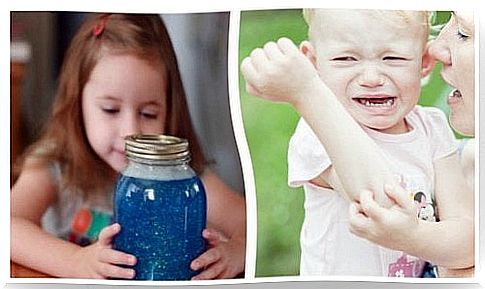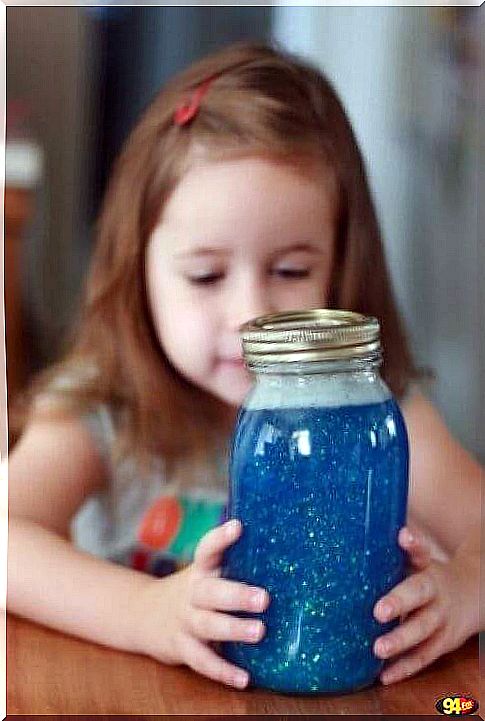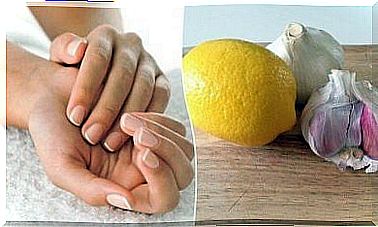Montessori Techniques To Control Your Child’s Anger

While it is true that Montessori techniques have been admired as much as they have been criticized, it remains an interesting subject that we can use in the classroom as well as at home and in the daily education of our children.
Today we are going to talk about the tantrums and excitement that children sometimes display, which can sometimes be so difficult for us to control and understand.
One of the most useful concepts Maria Montessori has taught us is the sensitive periods. From the time children are born to the age of about six, they experience something known as ‘opportunity windows’.
These opportunity windows are immediate as the children learn the innate skills and acquire certain competencies and skills.
This is the best time to teach them how to deal with and understand the complex emotional world that can sometimes overwhelm them.
Today, here on our website, we’ll bring you simple Montessori techniques that you can use to deal with some of your child’s emotional states.
Montessori techniques for dealing with tantrums and anger in children
We all know more or less what kind of education takes place in the nurseries that use Montessori techniques. At these centers the autonomy of the child comes first.
This mainly focuses on the child’s own responsibility for his or her own learning process, by:
- Exploring his curiosity.
- The interaction with everything that his or her environment can offer him.
However, many mothers and fathers wonder how Montessori pedagogy can help them in a smaller and more immediate environment, namely that of home. Ultimately, a child’s home is an immediate environment, where they can receive the most basic learning resources.
Let’s take a look at some advice to think about. Advice that will do a great job of helping parents regulate those tantrums that children may have.
Socio-emotional education

Maria Montessori never spoke “alone” about emotional intelligence. According to the famous teacher, emotion and socialization go hand in hand.
When a child has a tantrum, what he feels is nothing more than the inability of his social environment to adapt to his experience. Specific examples include:
- He can’t have what he wants, feels offended, annoys someone or something or is unable to wait for a reward… All this translates into tears, screams and kicks.
- Emotions surface from this socio-emotional context of the child through interaction with adults or other children. As a result, the child is unable to distinguish things from each other.
Despite the fact that some have criticized Montessori techniques for offering children this so-called freedom and independence, we cannot forget something fundamental:
- The adult is the guide, the adult provides the opportunity to learn and above all, the adult is an example that the child imitates and follows.
- These sensitive periods, which occur between birth and age 6 years old, are an important milestone that children go through. So that the parents are there to respond to every question and guide every emotion.
Aspects we need to think about to channel our child’s emotional world
- According to Montessori techniques, we should not ignore any word or part of the child’s behavior, nor compare him to anyone else. These actions will only make the child angrier.
- Make sure your child always feels confident. For example, you need to make him feel confident when he talks to you, about exploring the world, talking to other kids, playing with other kids and trusting people and creating things.
- Allow your child to make mistakes. Give him advice, but let him fix mistakes in his own way. Children should be given the opportunity to do things themselves. So that they feel they are able to boost their self-esteem.
- If a child gets angry, it means that there is something that he cannot express properly. It can also mean that there is some aspect of his environment that we need to know and understand.
- It is therefore important that we as parents guide our children with peace and patience. Never neglect these bursts of irritability, especially if they are small. It is necessary to trace its origin and give them strategies to combat it.
rest bottles

In the last few years, so-called ‘rest bottles’ have become extremely popular. They are used to relieve stress and anxiety in children. However, it is important to clarify what their purpose is and how you can use them.
- A rest bottle is a visual stimulant that children can focus their attention on for a while. This is due to the movements of the glitter in the bottle.
- A child should always be accompanied by an adult when using a rest bottle.
- For example, a child can take a rest bottle to bed every day. As your child observes and moves the bottle, you can ask how his day went or what he is worried about, what scares him, what he likes and dislikes, just to name a few examples.
- You have to ask these questions correctly, without judgment and also without asking directly. Instead, the questions you ask your child should be part of a game that promotes emotional release.
Rest bottles are simply resources that can help us as a parent and you can easily make them yourself.









